History, Diversity, and Greenspaces : Downtown Regina
Today we took a rest day to explore Regina. Saskatchewan's capital is the second largest city in this province (after Saskatoon), with a population of just over 215,000 people. It is located on Treaty 4 territory, within the traditional territory of the Métis People.
In 1882 it was declared to be the territorial seat of government for the North West Territories by the Lieutenant-Governor, Edgar Dewdney. This created a scandal because there were several 'better' locations in the nearby Qu'Appelle Valley, but Dewdney made his choice based on land interests he held at the current location which he believed would generate profit from the coming Canadian Pacific Railway.
The site was originally called Wascana, which is the Cree word for 'pile of bones,' because there was nothing there but a pile of buffalo bones. In 1882 Princess Louise re-named it Regina, the Latin word for 'Queen' in honour of her mother, Queen Victoria. It's nickname is now the 'Queen City.'
Because Regina was built on a mostly featureless stretch of flat, tree-less prairie, with only the Wascana Creek as a landmark, it became a beautiful and well thought out planned community. Early planners dammed the creek to create a decorative lake that serves as a focal point at the centre of the city. Wascana Centre is a large treed park with a paved cycling path through it that circles the lake, and many of the city's landmarks and cultural centres are located in or adjacent to this park.
As part of our explorations today we made our way to the Saskatchewan Legislative Buildings, which look out over the waters of Wascana Lake. The impressive cream-coloured Tyndall stone building with its iconic metal dome was constructed between 1908 and 1912. When it was built it stood as a symbol of all that the new province and its people hoped to achieve, and today it is recognized as a testament to the unwavering pioneer spirit and determination of the people who persevered and built their lives on the prairies.
On the grassy grounds of the Legislative Buildings was a large war memorial dedicated to the brave people who lost their lives during the First and Second World Wars, the follow conflicts and peace keeping missions since. The memorial had two parts, the entirety listing the names of over 10,000 people from Saskatchewan who have made the ultimate sacrifice so that we may all enjoy the freedoms we do today. It was a sobering list, but we were pleased to see that painted rocks showing poppies and other symbols of remembrance had been placed throughout, meaning it is still an appreciated part of the community.
We were also interested to read a plaque honouring the Military Nurses of Canada. Since 1885 nurses have been providing skilled and compassionate care to sick and wounded soldiers. In 1904 professional nurses entered the Canadian Army Medical Corps as Nursing Sisters, becoming the first women in the British Empire to receive military rank.
A formal flower garden separates the war memorial and the Legislative Buildings from the lake. The Queen Elizabeth II Gardens were designed by architects to include fully accessible walkways, paths, gardens, sculptures, and flowerbeds. The flowers were in full bloom and gave off a sweet smell in the warm morning air, and we were intrigued to see small dolphins created from succulents.
The formal symmetrical gardens also featured a bronze statue of Queen Elizabeth II riding her favourite horse, a black mare named Burmese, who was raised in Saskatchewan and was a gift from the RCMP in 1969. The Queen rode this horse in the Trooping of Colour in 18 consecutive birthday parades, and she unveiled the statue herself during a visit in 2005.
Also in the Queen Elisabeth II garden is a memorial statue to Walter Scott, who was the first premier of Saskatchewan (1905 - 1916). He was born on a farm near Strathroy, Ontario in 1867, moved to the North-West Territories in 1886, and was elected to federal politics in 1900. In 1905 Scott and his Liberals won the election and formed the first government of Saskatchewan, Canada's new "banner province."
After visiting the gardens we headed down to the lake, where we stopped at a well-placed snack truck for a scoop of ice cream. While enjoying this cool treat we strolled along the walkway, reading the interpretive signage as we went. It turns out that during the 20th century Lake Wascana began to fill with accumulated silt, and was starting to grow in. In 2003 the lake was dredged in what became known as 'The Big Dig.' This $18 million revitalization project deepened the lake by 5 meters, creating habitat for fish, and allowing more competitive rowing, canoeing, and kayaking during the summer months. Apparently the operation provided quite a spectacle for on-lookers and is remembered as a major event.
As we made our way downtown through the treed Wascana Park, we passed the Royal Saskatchewan Museum. Although it wasn't open, we enjoyed seeing the artwork decorating the outside. We also enjoyed watching a group of prairie hares munching on grass, hiding in the trees, and running along with their (in my opinion) ridiculous leaps and bounds.
On our way through the park we also passed the Honouring Tree, which was a tall metal structure topped with an explosion of five-pointed stars. It was installed in 2011, to commemorate the 100th anniversary of the 1910 settlement of people of African ancestry in the Regina area. The vision of the project was to promote a diverse community where all individuals have equal dignity and opportunity, new comers are welcomed and experience a future full of hope, and diversity is recognized as a valuable resource. We were very happy to see this celebration of multiple cultures, both in the park and throughout the city.
Exploring downtown Regina is an interesting mix of modern glass towers and office buildings, beautiful treed green spaces, well preserved or restored heritage buildings, and a central district with brick streets lined with small restaurants, pubs, cafes, boutique shops, and interesting artwork. We enjoyed walking the historic Scarth St, which had been partially closed to cars.
In the grassy treed Victoria Park near Scarth St. we also came across a cairn commemorating Louis Riel, the Métis leader of the Northwest Resistance. His trial was held in the courthouse in Regina on July 28 and 29, 1885. He was found guilty of treason and executed by hanging in November 1885, beginning a division in the country that can still be felt today.
As we continued our ramblings around the city, one of the highlights was seeing an elaborately carved metal sculpture of a bison, which was set against a backdrop of glass office towers on Regina Ave. It was interesting to see the iconic and ancient buffalo, which used to provide food, shelter, and a way of life for the Plains People set against the glass towers in which many now earn their livelihoods. It is amazing to think that such different lives and cultures have existed, and continue coexist in the same spot.
Another sculpture we enjoyed seeing in the city depicted four Canada Geese in flight. Their smooth, abstract, white forms made a clean outline against the tall glass towers behind them, which reflected the blue of the sky.
When we walked past city hall we found a particularly thought provoking sculpture dedicated to all the immigrants who arrived from a large number of countries to settle the prairies. Many of the figures were missing half their bodies, having left a part of themselves behind when they immigrated to the new land. The cultures of these pioneers have created a rich tapestry of life on the prairies that has been pretty amazing to see, explore, and experience as we've hiked across Manitoba and Saskatchewan, and we enjoyed seeing it celebrated in Saskatchewan's capital.
As we wandered through downtown we spotted a number of historical plaques, interpretive signs, and murals describing Regina's history.
One of the murals showed scenes from the Regina Cyclone, a tornado that destroyed parts of Regina on June 30, 1912. It killed 28 people, making it the deadliest tornado in Canadian history. Hopefully it keeps that record for a long time to come.
After a day of wandering around we went out for dinner at the Copper Kettle to celebrate Sean's birthday – marking the 6th birthday celebration between the two of us that we have had on the Trans Canada Trail. This colourful Greek restaurant offered a wide variety of huge and delicious meals, and we even enjoyed a slice of cake for dessert.
It was interesting to talk to the owner, whose family had run the restaurant since the 1960s. When she heard about our hike she said she could appreciate hiking for conservation, and said that in Greece, where people have less money and fewer natural resources, conservation of water and trees is very important. One of things she was most upset about was the construction of a bank building in Wascana Park that removed some of the old, mature trees and was done without properly consulting the community. As she wisely noted there is no reason why we can’t have development, prosperity and ecological conservation at the same time.
"Make no little plans; they have no magic to stir men's blood and probably themselves will not be realized. Make big plans; aim high in hope and work..."
Daniel Burnham
See you on the trail!
Remember to follow our entire adventure here : www.comewalkwithus.online
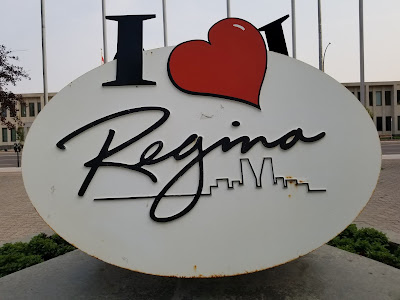










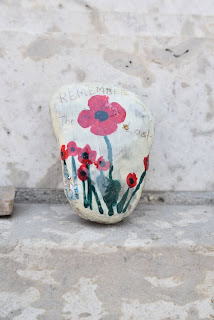









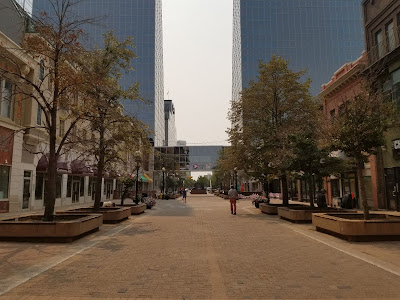











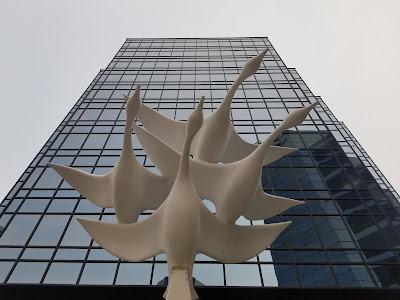








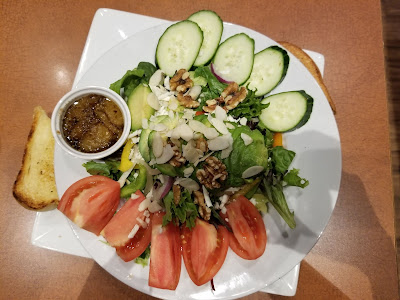


Comments
Post a Comment